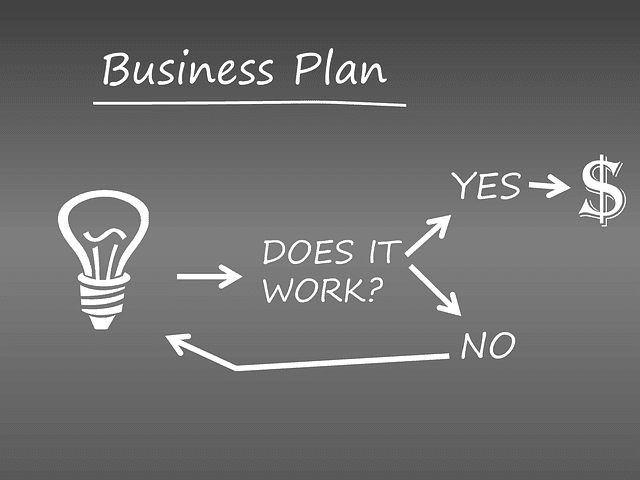A Step-by-Step Guide to Building a Successful E-Commerce Platform in 2024
Understanding Your Market and Setting Goals
The first step in constructing a competent e-commerce platform is carrying out appropriate market research. Specialists in the field emphasize this because it helps the business owner know the people to sell to. It also reveals what those people expect and includes doing a competitor analysis. Start by dividing your potential clientele base into specific classes that include age, sex, residence, and buying patterns. This categorization will explain in detail the aspects of the customers you are looking for. It will also assist the development of the products for the market.
Next, identify the wants of your consumers, as well as the appropriate audience for your goods. Collect some sources of qualitative research by talking to users, sending out questionnaires, or involving them on social media. Once you review the data from these sources, you will know the most suitable products. You will also determine the best services to offer your targeted customers. You will also understand the features you can add to your e-commerce site. Similarly, analyzing competitors in your market provides critical information. You learn about their strengths and weaknesses. This analysis shows you what areas exist for your business.
Setting SMART Objectives: Building a Strong Foundation for E-Commerce Success
When you have sufficient knowledge of the market, it’s time you state the objectives of your business. You have to come up with smart objectives that incorporate different dimensions of your e-commerce endeavor. These include sales, new customers, and awareness of the brand which will drive your business’s goals. Make sure that these objectives have a strong foundation in market analysis. Ensure they contribute to the further development of your business. They should be realistic and attainable. Learn about short-term and long-term goals. This knowledge will help in tracking progress. It will also assist in designing corrective actions if environmental changes occur.
A solid business strategy relies on detailed research of the market. This approach will go a long way in establishing your e-commerce site. This plan must include your UVP. It should outline marketing tactics. It must detail operational procedures. This ensures all parts of your business adhere to the set objectives. Furthermore, if you understand the market, your e-commerce business has a greater chance of doing well. Undertaking objectives also helps, despite the stiff competition.
Choosing the Right Technology Stack
In the year 2024, if you want to build a high-performing e-commerce site, the technology is crucial. It will be one of the most important determinants. The technology stack contains all the resources and frameworks that make it possible for the online shop to work. Usually, the main available options fall into three broad categories. These categories are website builders, content management systems (CMS), and self-hosted solutions.
User-Friendly Website Builders: Benefits and Limitations for Small Businesses
Website builders like Shopify and Wix are very user-friendly. This tremendous ease of use allows for very quick deployment of systems. It also enables uncomplicated deployment of systems. Thus, they are suitable for smaller or mid-sized businesses. Moreover, such types of platforms usually have integrated payment gateways. They also offer security features. These provide customers with a sense of protection when they are ready to shop. Nonetheless, limitations in customization and advanced features may cause difficulties for companies. These difficulties can hinder business growth due to limited scalability.
WordPress and WooCommerce: Flexible Solutions with Growth Potential for E-Commerce
On the other hand, some Content management systems like WordPress with Woo-Commerce tend to offer a different dynamic. They have plugins and themes that developers use to build e-commerce sites that are very unique and flexible. With this approach, users can add or edit any content on the website easily. This is possible thanks to the content management system that WordPress offers. In this context, it is easier to see the advantages of such platforms. They offer growth capabilities and a large base of users. Understand that not all CMS options include a hosting service. This means you would need to engage a third party for hosting. That can affect both safety and efficiency.
Self-hosted solutions and open-source platforms provide the most flexibility and control. Examples include Magneto and Presto Shop. They are geared toward big corporations that need advanced features, personalization, and growth. However, it poses a great burden. You must acquire the necessary skills and resources to host, secure, and maintain the solution.
In the end, choosing any technology stack involves considering several factors. These include scalability, usability, payment processing gateways, and security, among other issues. Knowing the advantages and limitations of different solutions will enable business owners to choose the best one for their business.
Designing an Engaging User Experience
The user experience (UX) of any e-commerce site is ideal within the basic core of the system. A good interface design not only entices prospective clients but also persuades them to go ahead and purchase. Therefore, several of these are the key elements of the focus in the design. They are site navigation, mobile optimization, visual branding, and product display.
Good site navigation makes it easy and instinctive for the customers to access the products. The addition of a clear and coherent menu system and enhancing the usability with a search engine dramatically improves navigation. It is also important to make use of breadcrumbs in controlling where a user is within a given site. As a result, this enables the user experience to be complete thanks to all the browsing activities. Product categories should be well organized. They should also be easy to find. This makes it easier for a customer to use the website or app.
Mobile Optimization: A Crucial Step for E-Commerce Success
In today’s mobile-dominated world, this cannot be overlooked. It should have been considered earlier. A responsive design ensures that the e-commerce site maintains the same general feel. It also looks consistent regardless of the screen size. Enhance the speed of loading for mobile users. Streamline the check-out process for attention seekers. Any kind of resistance at this stage will cause the potential buyer to abandon the cart. This mobile optimization is not just a passing phase. It is a need-based approach to effectively tap a wider audience.
In the context of marketing, visual branding is known to create an effective bond with customers. This involves elements such as beautiful pictures. It also includes color palettes that work well together and the right font in the right place. Speaking of product features, they play a great role. Displaying several pictures helps a lot in customers’ decision-making. Offering zoom and description options also improves the chances of buying the products.
Finally, A/B testing and soliciting user feedback should be adopted to promote a continuous evolution of the platform in line with customer expectations. Assessing the merit of many graphic design elements is also possible. You can learn how users respond to them. This process informs future changes. When these considerations are applied to your e-commerce platform, they result in a customer experience that elevates customer satisfaction and increases conversion rates.
Marketing and Driving Traffic to Your Store
There are numerous channels that can be used to market an e-commerce platform. It is recommended to strategize marketing and promotion for the e-commerce platform in 2024. Efforts should be more cohesive and integrated. Search engine optimization (SEO) will form the basis of this marketing dynamic. It helps place the e-commerce platform in the search results. Optimize your website architecture, content pages, and meta descriptions with the relevant keywords for better ranking. In addition to that, adding good and interactive content likely enhances your SEO. Search engines rank websites higher when they have useful content for users.
Content marketing should also be part and entwined with the SEO strategy. You can write interesting and informative blogs. You can also craft product descriptions and create videos in your area of expertise. These efforts will help to reach and convert potential customers. They will also assist in gaining some market share. These resources can also be used on social networks. They not only create more traffic but also assist in more shares and interactions.
Social media advertising also ranks top with marketing relevance. Social advertising apps such as Instagram, Facebook, and Pinterest allow one to place defined advertisements. They help convince people from the defined customer base. Integrating product-centric ads in a paid media strategy about the product can considerably create brand awareness. It can also increase the traffic to the e-commerce site.
Email Marketing: Driving Engagement and Repeat Purchases Through Personalization
Email marketing campaigns help keep customers engaged. They encourage them to proceed to make repeat purchases. Help build a subscriber list by offering incentives for registration such as discounts or exclusive offers. For instance, structure your email campaigns to meet customers’ needs. Use personalized recommendations based on their browsing and purchasing histories. This strategy can improve conversion rates.
The assessment and evaluation of the practical marketing strategies employed cannot be overlooked. Carry out activities such as the use of the Google engine to analyze sources of traffic, user activities, and conversion rates. This kind of information helps you to manage your campaigns effectively. You can adjust them to the levels you want and boost returns on the campaigns.
In conclusion, proper planning is essential. It involves implementing all SEO, content marketing, social media advertising, email marketing, and analytics for the e-commerce site. This will contribute to its growth. It will also help retain customers for the longest time possible.






